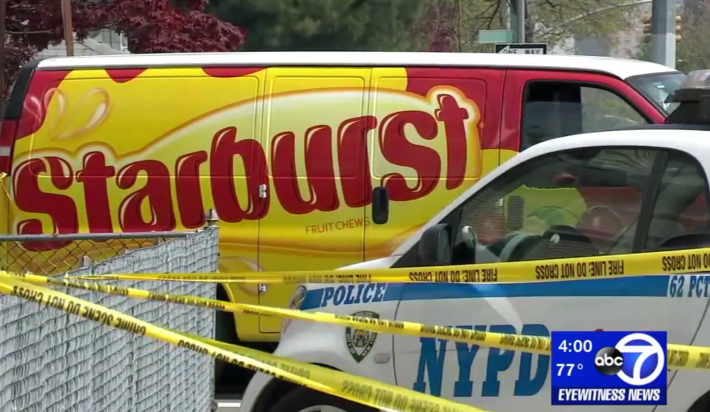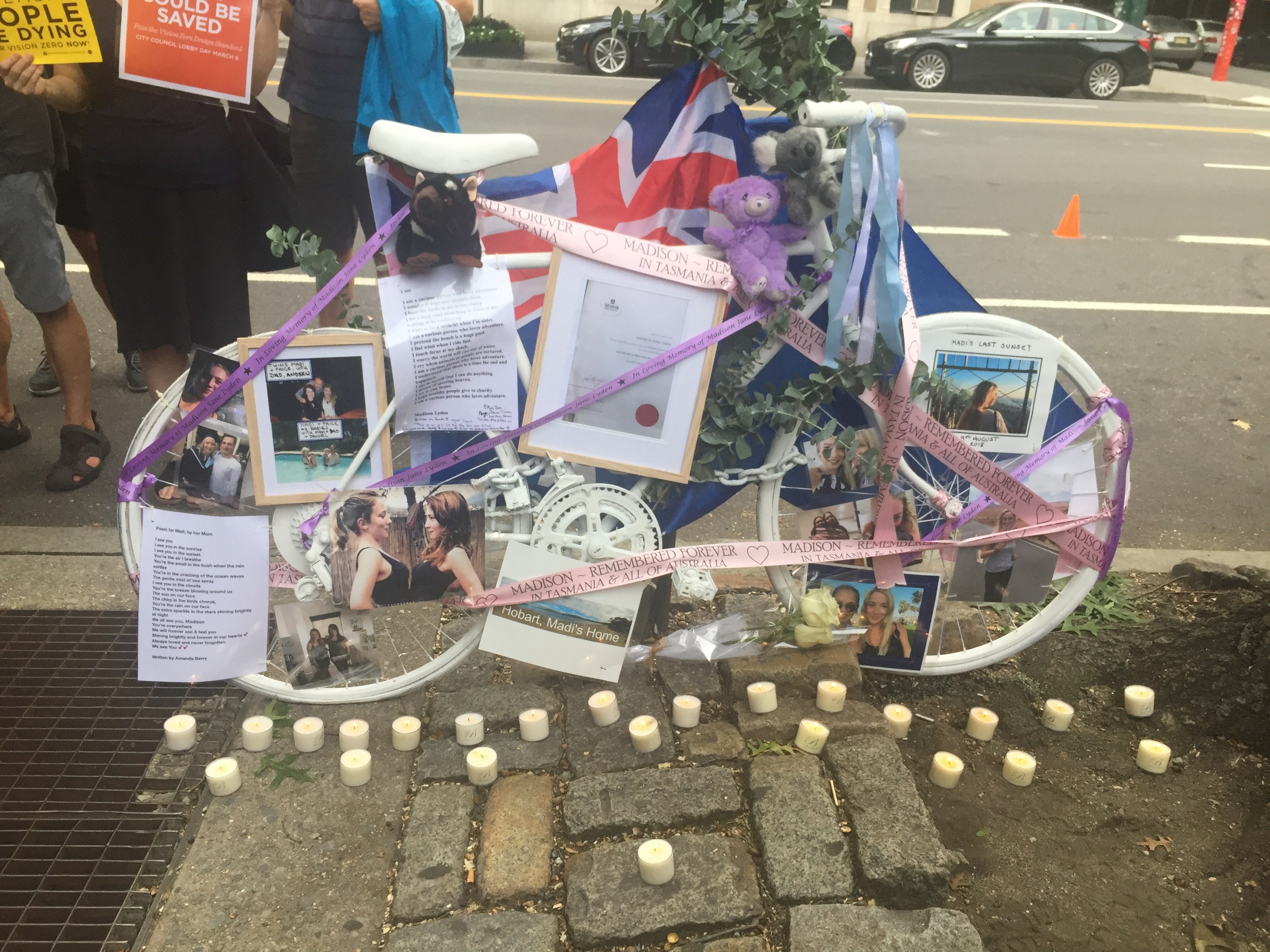Teach your children well — or at least a little.
The state Department of Motor Vehicles will have to do a better job of instructing would-be drivers that they're not the only vehicles on the road, and that their fellow motorists aren't the only thing to watch out for, thanks to a long-stalled Senate bill that finally passed on Tuesday.
The vote was unanimous on State Senator Andrew Gounardes's bill, which would "will require new drivers to learn about pedestrian and bicyclist safety awareness as a component of the pre-licensing exam and as a prerequisite for obtaining a license to operate a motor vehicle."
"The instructions and the driving test haven't been updated to reflect the reality that our roadways are shared spaces," Gounardes said on the Senate floor, citing "an epidemic in traffic violence" including the recent killing of a 3-year-old boy by a candy truck delivery driver.

"He rolled up to the stop sign and was only looking for other cars, not pedestrians or cyclists," Gounardes added.
The bill may sound unnecessary, but only if you don't know little young people are taught about pedestrians and cyclists during the licensing process. In fact, the only time cyclists are mentioned in the instruction syllabus for the state DMV's five-hour course is a lone paragraph recommending that driver-training instructors tell their students about bikes — if they ask about it:
"Direct students who seek more information on bicycles to read the New York State Driver’s Manual chapter on 'Sharing The Road,'" the syllabus states.
The state's official driver's manual — the Bible to all youngsters hoping to pass their written and road tests — is hardly any more effusive about helping newbie drivers understand the challenges they are about to face on the roadways. This is the full extent of the bike education section in the "Sharing the Road" section:
Bicyclists and in-line skaters have the right to share the road and travel in the same direction as motor vehicles. They are often hard to see in traffic and have no protection from a traffic crash. Check your “blind spots” before you make a turn, parallel park, open a door or leave a curb. Do not depend only on your mirrors – turn your head to look for bicyclists, skaters and scooter operators that may be next to you or approaching.
Give bicyclists and in-line skaters room when you drive. Reduce speed as you pass them. Air pressure from a vehicle that passes them quickly can send them off balance.
Be aware that the bicyclist or in-line skater near or in front of you can react to road hazards with sudden changes of speed, direction or lane position.
The rules of the road and right-of-way apply to and protect these and other highway users. You must yield the right-of-way to them just as you would to another vehicle. And they must obey the rules of the road just as motor vehicle drivers do.
That's it. Just 187 words on what drivers should do to avoid hitting cyclists.
After that, the manual spends 391 words detailing all the rules that bicyclists must follow to avoid being hit by drivers.
Pedestrians get a little more attention from the guide — 264 words reminding drivers that "pedestrians and skateboarders are at high risk in traffic" and that "the law requires you to be extra careful to avoid a collision with them" — but that brief section is then followed by 49 words detailing all the rules pedestrians must follow so drivers are not inconvenienced.
The insufficiency of driver education is a constant issue in New York City, where there are roughly 230,000 crashes per year, roughly 45,000 of which cause serious injuries. According to the NYPD, there were 17,521 crashes last month [PDF], caused by the usual toxic mix of "driver inattentiveness," "failure to yield" or "following too closely." But a large number of crashes — 281 — were caused by "driver inexperience." That's even more than the 213 that were caused by drunk driving — a hazard that gets far more attention.
The legislature has long been trying to do something about the paucity of pedestrian and cyclist instruction for would-be drivers. Gounardes's predecessor, Marty Golden, had sponsored a similar bill for several sessions, and Assembly Member Walter Mosley had his own version (Mosley's predecessor, current Rep. Hakeem Jeffries, introduced the bill for the first time in 2011). Neither made it anywhere — for reasons that constantly perplexed Mosley.
"We need to think about the way we think about driving our streets. It’s time we become proactive and place pedestrian and bicycle safety in our DMV curriculum so that every driver who gets a license has the know-how to navigate the modern roadways safely." pic.twitter.com/R99vysuLfq
— Andrew Gounardes (@agounardes) May 15, 2019
"It's not controversial," he told Streetsblog. "It's about understanding that drivers must share the road. They are not the primary owners of the road. Everyone has equal access to the roadway."
Mosley said he was hoping that just one question on the written test could deal with bikes or pedestrians, but the DMV has long resisted that.
"All it takes is one question on the test. Just one!" he said. "Maybe it's the difference between passing or failing. A car is a projectile that can maim or kill someone if the driver is not using the proper precaution. At the very least, we need to educate them."
The bill stalled when Assembly Member David Gantt of upstate Rochester was running the transportation committee. That panel is now overseen by Assembly Member Bill Magnarelli. He did not respond to a deadline call. (We will update this story if he does.)
A DMV spokesperson said the agency "does not comment on pending legislation."
Of course, there's no telling how much safer the roads would be if every driver had to watch this:
Tom Lutz bought a folding bike to commute to his office in New York City, and then things got interesting. (via @BICYCLINGMag) pic.twitter.com/6LluGULZGR
— Popular Mechanics (@PopMech) August 31, 2018






